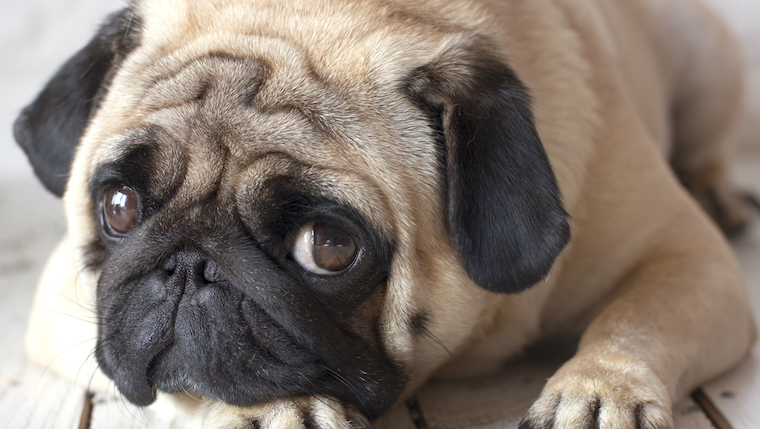Is your dog blinking often? Does your dog have red eyes, or swollen tissue around the eye? Have you seen thick discharge from the eyes, or hair matting around the eyes from discharge? If you said yes to any of this, your dog may be dealing with dry eye syndrome, formally known as keratoconjunctivitis sicca (or KCS).
Which dogs get dry eye?
Dry eye syndrome is fairly common: it affects about 5% of dogs, and is usually only seen in dogs (not cats). A few breeds are most likely to get dry eye, including Cavalier King Charles Spaniels, Cocker Spaniels, West Highland Terriers, Miniature Schnauzers, Boston Terriers, Bulldogs, Lhasa Apsos, and Shih-Tzus.
Dry eye symptoms can come on suddenly, or a dog can be born with the condition. Often KCS is the result of a change in a dog’s immune system function, either because of the dog’s health or medication. Even though a discharge can make some owners think there’s an eye injury or infection, this discharge is often a sign of the irritation caused by the eyes not being about to make enough tears.
How do I know it’s dry eye?
Because eye problems can be complicated and the result of various causes, it’s important to see a veterinarian right away if you see eye problems in your dog. Your vet will do an eye exam and run a few tests to determine if there’s an eye injury, an infection, or if your dog has KCS.
Treating dog dry eye
The treatment for keratoconjunctivitis sicca may include prescription eye drops, and also often requires regular eye cleaning/wiping. Eye drops or creams may be prescribed for short term or long-term use. Do not start treatment at home without first consulting your vet.
Just like with humans, eyes are fragile, important parts of your dog’s health, and any problems with eyes need to be addressed immediately. If you see redness, swelling, or discharge in your dog’s eyes, make an appointment right away.













